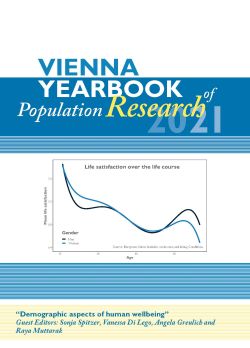
Vienna Yearbook of Population Research 2021, pp. , 2021/03/09
Demographic Aspects of Human Wellbeing

In this study, we ask whether the U-shaped relationship between life satisfaction and age is flatter for individuals who are partnered. An analysis of cross-sectional EU-SILC data indicates that the decline in life satisfaction from the teens to the fifties is almost four times larger for non-partnered than for partnered individuals, whose life satisfaction essentially follows a slight downward trajectory with age. However, the same analysis applied to three panel datasets (BHPS, SOEP and HILDA) reveals a U-shape for both groups, albeit somewhat flatter for the partnered than for the non-partnered individuals. We suggest that the difference between the cross-sectional and the panel results reflects compositional effects: i.e., there is a significant shift of the relatively dissatisfied out of marriage in mid-life. These compositional effects tend to flatten the U-shape in age for the partnered individuals in the cross-sectional data.
Keywords: Life satisfaction; Life cycle; Partnership; Marriage